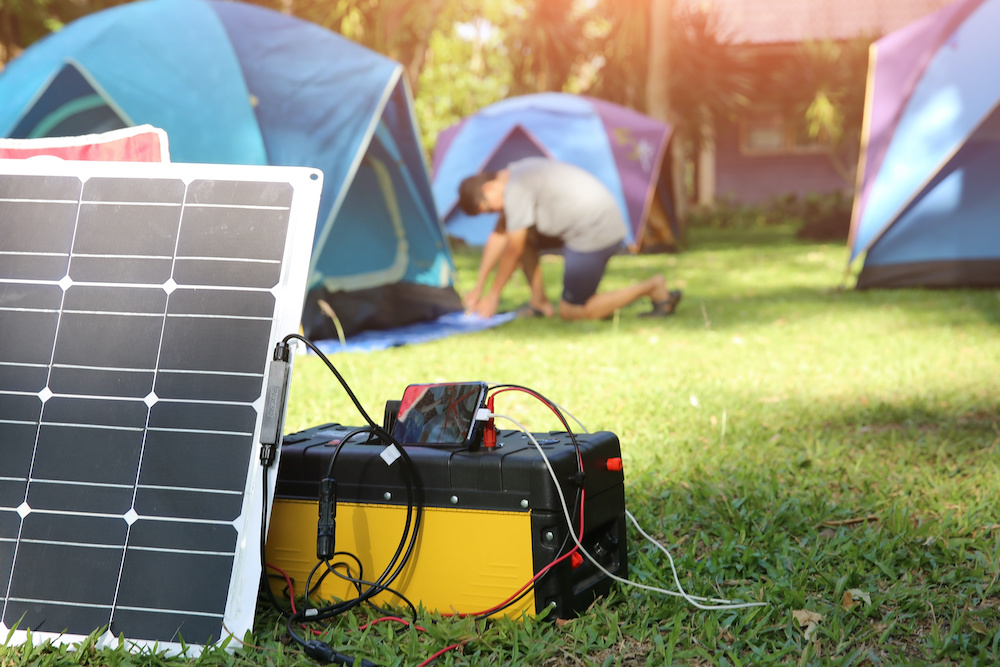A generator is a combustion engine that can generate power during power outages, natural disasters, and more, so it would be beneficial during emergencies where a power source is not available.
You can also use a generator during camping if you want to experience the outdoors without cutting off the important gadgets that you are currently using.
However, you need to learn how to ground a generator when camping to ensure your safety.
Contents
Why It's Important to Ground a Generator
A lot of people have been asking why they have to ground a generator.
If you don’t know anything about using a generator and you’ve just used it without doing any grounding, you increase the risk of uncommon current flow.
Uncommon current flow can cause power outages, damage to equipment, and it can even cause harm to the people around you.
If you decided to go camping and you brought a generator, you need to ground the generator so it won’t be damaged, and no one would be harmed in the camping area.
How to Ground a Generator When Camping
Although most of the modern generators don’t require grounding or earthing, you should connect old models and generators that can produce larger outputs to a ground source.
Here are some of the things that you should know when grounding a generator when you are camping.
Recommended Tools for Grounding
It is not possible to ground a generator without the necessary tools, so make sure you bring all of the tools mentioned below so that you can connect the generator to a ground source.
1. Copper Rod
You need to get a copper rod that is at least four feet since it would be the main grounding material for your generator.
2. Copper Wire
You need a copper wire to connect the grounding rod to your generator.
You have to remember that you should only use a good quality copper grounding wire and not just any wire at your disposal.
3. A Hammer
You need a hammer to sink the copper rod to the ground, especially if the surface is hard.
Using a hammer will easily drive the copper rod to the ground with ease, even if the surface is hard.
4. Pliers
You need pliers to wind the copper wire to the grounding rod easily.
5. Wire Strippers
This tool is required since it would help you remove the insulation from the grounding wire before you tie it to the rod.
It is not advisable to use other tools since it might damage the wires.
6. A Wrench
You need to have a wrench since it can help attach the copper wire to the generator with ease.
Required Steps
Once you’ve prepared the tools that you need for grounding your generator, you have to know the step-by-step process of doing it.
Here is a simple guide to help you ground your generator effectively.
1. Sink the Copper Rod to the Ground
The first step is to drive the copper rod to the ground.
Prepare your hammer and use it to sink the rod at least eight feet to the ground.
This is pretty easy if the soil is not too hard, but there are instances when you might encounter rocks or hard surfaces.
You can move the generator to a new area and try to sink the rod to the ground.
If the surface around the camping area is hard, you can pour some water to the soil and wait until it softens up.
If the ground is rocky and you are having a hard time sinking the rod, you can drive it to the ground at a particular angle.
Make sure that the angle will not exceed 45 degrees.
You have to remember that sinking the rod deeper to the ground would provide better earthing so that you can sink the rod as much as you can.
2. Strip the Copper Wire
Once you’ve successfully sunk the rod to the ground, the next step is to prepare your copper wire and strop it at both ends.
You can use the wire stripper to do this.
Remember not to over strip the wire because it would leave a part of the wire bare.
Electricity will run through the copper wire to the copper rod, so it would be hazardous if you over strip your wire.
3. Wrap the Wire to the Copper Rod and Generator
After sinking the copper rod and stripping the wire at both ends, attach the copper wire to the rod and the generator.
With the use of your pliers, wrap one end of the copper wire to the rod.
After doing this, connect the other end to the generator to complete the process.
Use the wrench and loosen the grounding bolt.
Lastly, wrap the other end of the wire tightly to the grounding bolt and retighten it.
Safety Tips When Grounding a Generator
Although grounding a generator is not too difficult, you can't completely prevent injuries during the process.
Here are a few safety tips that you can follow to ground the generator effectively without hurting yourself.
1. Use Gloves
Stripping the copper wire is easier said than done.
If you are not careful, you might hurt your fingers during the process.
Wearing gloves is a way to prevent any injuries while doing it.
2. Hold the Rod on Its Body
You are going to use a hammer to sink the copper rod to the ground, and to do so safely, make sure your hand is in the middle of the copper rod before you start hammering down.
If the hammer accidentally slips from the tip, it might slide directly to your hand, so make sure that you don’t hold the copper rod near the tip when using the hammer.
3. Ask for Help
Don’t be shy to ask for help, especially if you don’t know how to use the tools that you prepared properly.
Do You Have to Ground a Modern Portable Generator?
When you are going to a camping area, bringing a portable generator is a luxury since you can have artificial lighting during the night.
You can even use your mobile phones and laptops since you have a power source.
If you want to know if you have to ground a portable generator, the answer can either be “Yes.” or “No.” depending on the manufacturer and model of the generator.
You have to remember that some portable generators don’t require grounding, and some still need to be grounded.
Modern generators can be separated into two categories:
- Separately Derived Systems: This is a wiring system that has no direct electrical connection from circuit conductors.
- Non-Separately Derived Systems: This system has a transfer switch that won’t be transferred to the neutral ground conductor. The fuel tanks, engines, and housing of portable generators are usually bonded to the frame so they won’t have to be grounded.
If you want to make sure if the portable generator should be grounded or not, though, you have to check the instruction of the manufacturer.
All portable generators come with a user manual, so you have to read it carefully so that you won’t make a mistake.
If you already lost the user manual, you can check the transfer switch.
If the switch is designed in such a way that you can transfer it to the neutral ground conductor, you have to ground the generator.
Conclusion
Learning how to ground a generator when camping is essential if you plan to bring a generator with you.
Grounding is not too difficult, and anyone can do it.
You don’t need to be a professional to set it up because the steps are straightforward to follow.
If you don’t want to do any grounding, you can invest in a portable generator with a non-separately derived system so that you won’t have to worry about earthing.
That will help you save more time when camping, and it will guarantee that you and your friends or family members would be safe from fire or potential injury.

